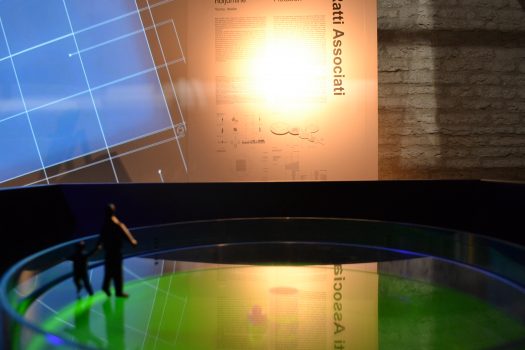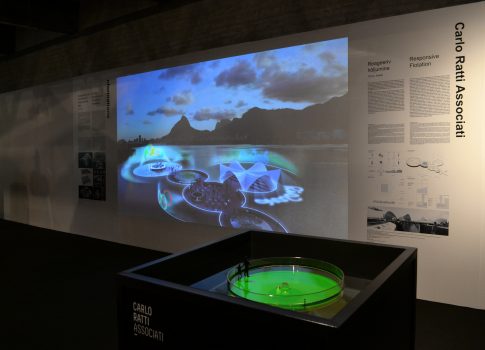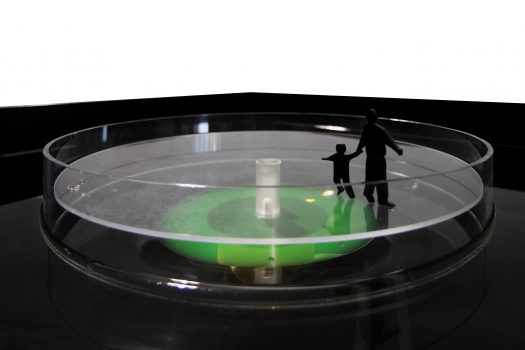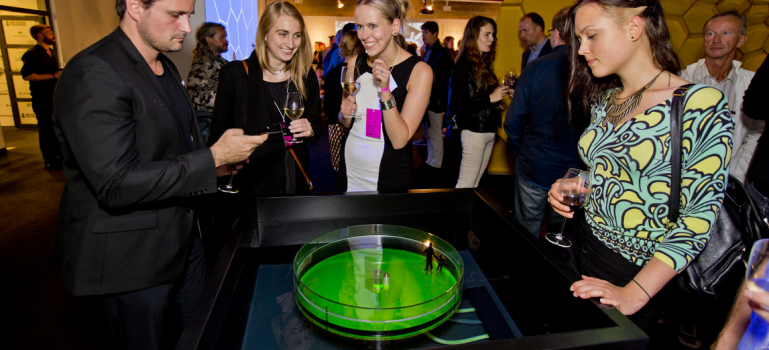Often employed to introduce movement and complexity to static architecture, the use of responsive, digital technologies can equally be used to achieve stasis and equilibrium with the surrounding landscape. Borrowing from submarine technology, our case study plays with the surface of the water, carving out space by subtraction and offering an unprecedented vantage point for citizens and tourists to study, contemplate and celebrate water.
The responsive flotation system creates an equilibrium between the user(s) and the level of the water. Human equilibrium is regulated through our inner ear labyrinth, by which a liquid circulates, following our body’s movements and stimulating the nervous system and the brain to react by coordinating the body to balance itself. Segway technology works in a similar manner as it navigates the city. A system of sensors and gyroscopes perceives the barycenter movement of the machine plus the carried load. A microprocessor activates the motor to rotate the wheels dynamically, balancing the Segway. On a Segway, our body maintains its equilibrium and is designed to maintain equilibrium with respect to the level of the water, recalibrating in real time according to the number of occupants and other additional loads being carried by the platform.
A technological apparatus, inspired by the submarine’s double shell, fills and empties an air-water chamber located below the surface of the water, drawing the platform up and down. Sensing variations in weight, the platform hovers at the surface of the water – creating space by subtraction and offering views that extend over the waterline. These spaces sense and respond to encourage citizens to actively engage with their environment – raising awareness about water cycles, both in nature and in the city, and encouraging visitors to adopt more water-friendly lifestyles. The new condition of stasis on the water’s edge enables real-time water monitoring – data collection on chemical pollutants, biological pollutants, plant and animal life, temporal conditions, etc.
Incorporating the latest feats of smart city technologies, the pavilion monitors water conditions as well as the dynamics of the host cities. Thank to the responsive flotation system, the proposed pavilion can simply be anchored to the floor of the body of water like a boat, minimizing interference with the local ecosystem and avoiding modifications to the shoreline.
The prototype developed for the “Body Building” exhibition at the Tallinn Architecture Biennale is a scaled mock-up that illustrates the architectural ambition behind the weight of this single floating ring. A responsive flotation system controlled by an Arduino board connected to real-time water sensors will detect the movement of the floating ring with respect to the level of the water. A water pump allows the system to maintain stasis by taking in or expelling water.





